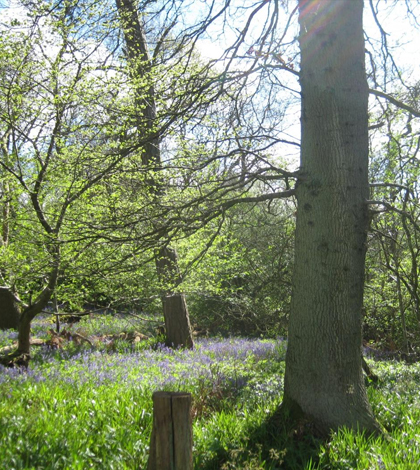Long-running phenology record reveals seasonal shifts for leafing and flowering plants

Warming autumns are resulting in earlier spring leafing for certain trees. (Credit: University of Edinburgh)
In 1736, English naturalist Robert Marsham began recording observations on the changing seasons at his family estate. His descendants continued his work until 1947, creating one of the earliest comprehensive records of phenology, as well as one of the first citizen science projects.
Researchers from the University of Edinburgh tapped Marsham’s records to understand how a changing climate could impact the order in which certain tree species come into leaf. Their findings, published online in Global Change Biology, suggest that the balance of species composition and long-term survivability could shift with seasonal temperatures over time.
“Phenology is a really interesting kind of trait to study in the context of climate change,” said Ally Phillimore, National Environment Research Council advanced fellow at the University of Edinburgh. As phenology can determine which plant species coexist at a particular time, it can have a strong impact on survival and reproduction.
The Marsham record is well-known in the U.K., and for good reason: It’s not only one of the world’s longest records of phenology, but also the ideological foundation upon which the Woodland Trust charity was built. The trust helped establish a U.K.-wide citizen science project called Nature’s Calendar. The project monitors the phenology of many different woodland plants in the U.K., and also serves as a repository for older phenology records. Phillimore and his peers drew upon these data to determine how accurately daily temperatures could predict the leafing and flowering of woodland species.
The researchers had access to daily average temperature records from as far back as 1782. They compared these data with those from the Central England Temperature dataset, which compiles average monthly temperatures for the Midlands region of England back to 1659.

English naturalist Robert Marsham was one of the first citizen scientists and created one of the earliest long-term records of phenology.
By analyzing the temperature and phenology data, Phillimore said, “we’re able to build up a picture. A warm spring means all of those [leafing and flowering] events occur earlier. We also found that some of the species seem to really respond to autumn temperatures.”
In the studied region, smaller species native to higher elevations such as silver birch and rowan are most likely to come into leaf later in a warming climate, Phillimore said. The timing of other species, such as oak, could remain relatively unchanged.
“The question that naturally follows is: So what?,” Phillimore said. “What’s the consequence of birch coming to leaf after oak in the future?”
Historically, birch have had a two-to-three-week period in which they develop their leaves before oak. With no towering oaks flooding the canopy with their leaves, the birch have a brief respite in which they can capitalize upon unfiltered sunlight for photosynthesis. But if warming autumns push birch leafing timing back by even a couple of weeks, they could lose that critical advantage, shifting the balance in favor of oak in Southern England.
While the Marsham record proved invaluable for predicting changes in phenology in one part of England, Phillimore stresses that shifts in relative phenology “are very much influenced by rates of climate change in different areas.” So what holds true for birch in one part of England, may not hold true for the same species in another part of the country, much less on another continent.
Making accurate phenology predictions for any given species in a region requires specific data, and Phillimore says citizen science programs are helping fill the gaps in conventional records. Last year, the University of Edinburgh set up the Track a Tree program, in which participants are asked to revisit and record observations about the same woodland and tree several times in a season. In the U.S., the National Phenology Network and Project BudBurst serve similar purposes. Anyone interested in contributing to these valuable datasets should visit the organizations on the web.
“It’s a difficult scenario for predicting how species are going to cope with climate change, because what applies in one area might not apply in another area a few hundred miles away. No one wants to hear that,” Phillimore said, laughing.
Top image: Warming autumns are resulting in earlier spring leafing for certain trees. (Credit: University of Edinburgh)




0 comments